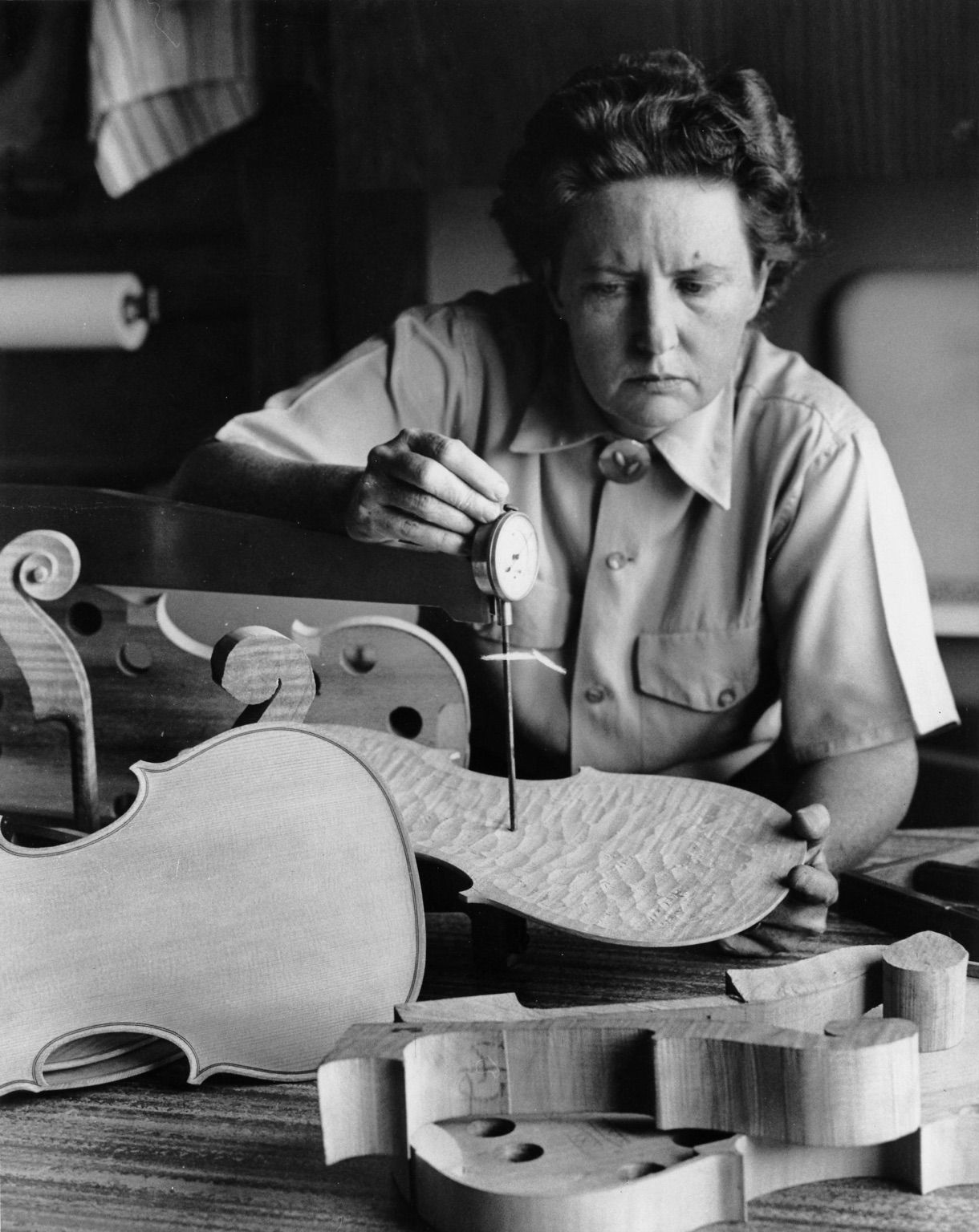Listen on: Apple | Spotify | Google | More
Carleen Hutchins wasn’t formally trained in violinmaking, but despite that—or because of it—she changed the profession forever. With handfuls of Christmas glitter and a 150-year-old technique, she was able to visualize the vibrations of violin plates, allowing luthiers to rely to on the principles of acoustics instead of just “feel.” Traditionalists were outraged, but Carleen didn’t seem to mind. She had already spent most of her adult life pushing back on the constraints imposed on women in midcentury America. This episode explores Carleen’s life and legacy, the history of acoustics, the act of making sound visible, and our obsession with old Italian violins.
You can find a transcript of this episode here.
Production Notes
I spent a lot of years studying the history of sound in graduate school, but the first I heard of Ernst Chladni was from some graphic designers. It was early on the development of this show, but a) I knew I wanted the show to have a visual identity that matched the way the show sounded in my head, b) I was already using this “visual identity” stuff as a way to procrastinate actually editing the audio, and c) it was really fun and inspiring to hang out with the team at Art & Sons.
So I’m in their studio one afternoon, and they start showing me images like this. I was shocked. In my experience, the visual language for sound-related things was pretty limited: waveforms, transistor radios, vacuum tubes, phonograph horns. This was something I hadn’t seen before; it had energy, mystery, beauty.
So I go home and start googling the hell out of it. I find all kinds of things, from oddly poetic demonstrations to insanely produced car commercials. But soon I also came across Carleen Hutchins, who applied Chladni’s technique of vibrating plates to the plates of violins. And while I was saddened to learn that Carleen died in 2009, I was excited to learn that there was a recent biography about her, and that the author of that biography, Quincy Whitney, had already done some radio appearances. I devoured the book, wrote her an email, and the episode took off from there.
You can learn more at the links and resources below and read the full transcript here.
The Voices
- Quincy Whitney is a former Boston Globe arts and science reporter and biographer, and author of American Luthier: Carleen Hutchins—the Art and Science of the Violin, shortlisted by PEN America as one of the ten best biographies of 2016
- Myles Jackson is a historian of science who explores the intersections between science, technology, aesthetics, history, and society. He is currently on the faculty at the Institute of Advanced Study
- Joseph Curtin is a master violinmaker who was a 2005 recipient of a MacArthur Fellowship
- Samuel Zygmuntowicz is a master violinmaker who was the creative director of Strad3D, the first-ever 3D laser vibration scans of violins
The Sounds
- The voice of Carleen Hutchins comes to us via James June Schneider, who conducted interviews with Carleen as part of a documentary project
- The theme song for Field Noise is an excerpt from “Grey Eyed Bird” by Slow Machete
- The music throughout this episode is by Blue Dot Sessions
- The closing music is an instrumental version of the song “My Girlfriend’s Boyfriend,” by Her Space Holiday
To Learn More
- Quincy Whitney, American Luthier: Carleen Hutchins—the Art and Science of the Violin, ForeEdge Press, 2016
- Myles Jackson, Harmonious Triads: Physicists, Musicians, and Instrument Makers in Nineteenth-Century Germany, MIT Press, 2006
- Carleen Hutchins, “The Acoustics of Violin Plates,” Scientific American, Vol. 245(4), Oct 1981
- Joseph Curtin, “Listener Evaluations of New and Old Violins,” PNAS, May 2017
- Joseph Curtin, “Carleen Hutchins Remembered,” The Strad, November 2009
